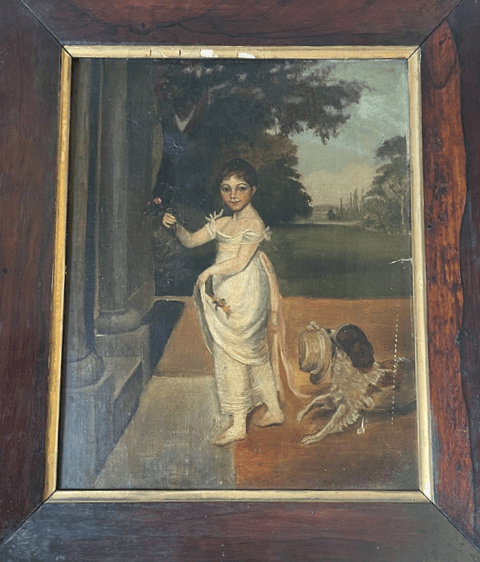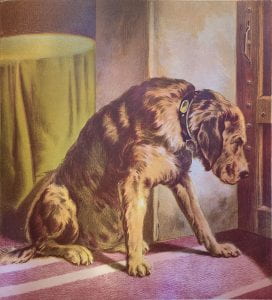by Rachel Jacob, Armstrong Browning Library Graduate Research Assistant
In September of 2020, the Armstrong Browning Library acquired multiple new Browning related objects. These objects were at auction from Lawrences Auctioneers in Sommerset, England. It is usual for a few Browning items to be at an auction, but for this Lawrences auction, a descendant of the Brownings put their Browning collection up for sale. Below are the items the Armstrong Browning Library added to our collection from this Browning-filled auction.
The Brownings’ Library
Talfourd, Thomas Noon. Dramatic Works. 11th ed. London, 1852. Browning Guide # A2240.1 .
Hill Legacy Collection in Browning and 19th Century Studies
Presentation Volumes
Browning, Elizabeth Barrett. Aurora Leigh. London: Chapman and Hall, 1857. Browning Guide #C0005.2.
Hill Legacy Collection in Browning and 19thCentury Studies
Browning, Elizabeth Barrett. Poems Before Congress. London: Chapman and Hall, 1860. Browning Guide # C0120.
Hill Legacy Collection in Browning and 19thCentury Studies
Browning, Elizabeth Barrett. The Greek Christian Poets and the English Poets. London: Chapman & Hall, 1863. Browning Guide # C0039.1.
Hill Legacy Collection in Browning and 19thCentury Studies
Browning, Robert. Selections from the Poetical Works of Robert Browning. London: Chapman and Hall, 1863. Browning Guide #C0544.2.
Hill Legacy Collection in Browning and 19thCentury Studies
Wey, Francis Alphonse. Rome. Introduction by W.W. Story. London, 1875. Browning Guide #C0641.05.
Hill Legacy Collection in Browning and 19thCentury Studies
Browning Letters
Third draft copy of letter from Elizabeth Barrett Browning to Lord Somers, October 1817.
Margaret Cox Endowed Fund
Manuscripts of Elizabeth Barrett Browning
Browning, Elizabeth Barrett. The African (“Cold shone the moon on distant mountains”). Transcript by Mary Moulton-Barrett with revisions by EBB. Browning Guide #D0015.1.
Margaret Cox Endowed Fund

The African by Elizabeth Barrett Browning. Manuscript.
Browning, Elizabeth Barrett. The Enchantress (“Above the ’Egean wave, the sun is glancing”). Fair copy, revised, in the hand of Mary Moulton-Barrett and EBB, with pencil revisions in EBB’s hand. Browning Guide #D0231.1.
Margaret Cox Endowed Fund
Browning, Elizabeth Barrett. The Enchantress (“Above the ’Egean wave, the sun is glancing”). Transcript, revised, by Mary Moulton-Barrett and EBB. Browning Guide #D0231.2.
Margaret Cox Endowed Fund
Browning, Elizabeth Barrett. The Enchantress (“Above the ’Egean wave, the sun is glancing”). Transcript by Mary Moulton-Barrett. Browning Guide #D0233.1.
Margaret Cox Endowed Fund
Browning, Elizabeth Barrett. The Enchantress (“Above the ’Egean wave, the sun is glancing”). Transcript by Mary Moulton-Barrett. Browning Guide #D0233.2.
Margaret Cox Endowed Fund
Browning, Elizabeth Barrett. An Essay on Mind (“Since Spirit first inspir’d, pervaded all”). Transcript by Mary Moulton-Barrett. Browning Guide #D0251.1. https://www.browningguide.org/browning-collections/search-results/?start-date=&end-date=&name=&name-select=&role=&title=&description=&location=§ion=4&entry-number=0251.1&order-by=entry-number&search-submit=Search
Margaret Cox Endowed Fund
Likenesses of Elizabeth Barrett Browning
Copy of Charles Hayter’s oil portrait of Elizabeth Barrett Browning as a child walking into the porch at Hope End, followed by a spaniel carrying her hat. Browning Guide #F0002.
Margaret Cox Endowed Fund

Copy of Charles Hayter’s oil portrait of Elizabeth Barrett Browning as a child
Works of Robert Browning, SR.
Browning, Robert, Sr. The Druidical Tumulus, Pornic. Wash and ink drawing. Pornic, 1862. Browning Guide #J0025.05
Margaret Cox Endowed Fund
Other Association Manuscripts and Document
[Moulton-Barrett, Edward Barrett (brother)]. Criticism of EBB’s The Seraphim. Browning Guide #L0186.1
Margaret Cox Endowed Fund
Moulton-Barrett, Mary. Passage from Pizarro by Richard Brinsley Sheridan. Browning Guide #L0212.1
Margaret Cox Endowed Fund




